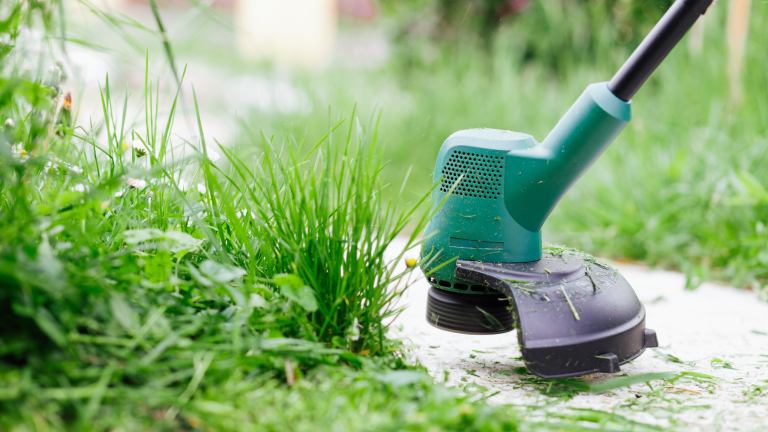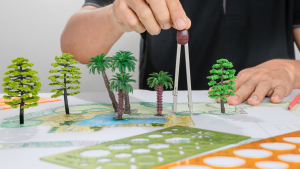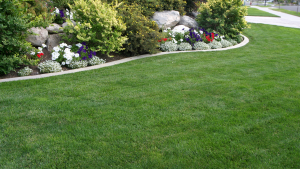Winter turns our outdoor spaces into beautiful, snowy landscapes. But to keep our lawns and gardens healthy, whether snowy or not, we must give them extra care this season. This care ensures they’ll bounce back beautifully when spring arrives. Cold weather can be harsh on plants, so these months need more attention to keep everything thriving.
In snowy areas, snow removal is essential to prevent damage. And for milder climates, adjusting watering and protecting plants from frost are key. It’s all about understanding what your specific garden needs during this time.
Taking care of your outdoor space during winter isn’t just about aesthetics; it’s about setting the stage for a healthy, flourishing garden later. By giving your garden the attention it needs now, you’re ensuring it’ll be at its best when the warmer days return.
Visit https://www.batonrougefenceinstallers.com/ for more details.
Importance of Winter Care for Lawns and Landscapes
The significance of winter maintenance cannot be overstated. A well-cared-for garden in the cold season ensures:
- Preventing Damage: Shielding your plants, trees, and grass from harsh weather prevents damage, promoting healthier growth.
- Preparation for Spring: Proper care sets the foundation for a vibrant spring garden, allowing plants to flourish after the dormant months.
- Pest and Disease Control: Vigilance in winter helps prevent pests and diseases from taking hold, safeguarding your landscape’s health.
10 Winter Yard Maintenance Tips for Snow Climates
For regions blanketed in snow, consider these essential tips:
- Clear Snow: Regularly remove snow to prevent it from compacting and damaging grass. Snow removal is crucial to avoid the accumulation and compaction of snow on your lawn. The snow accumulation can cause ice to develop, damaging the grass beneath. Use a snow blower or shovel often to clear snow, especially after heavy snowfalls.
- Avoid Salt Damage: Use alternatives to salt to avoid harming your plants and soil. While salt is commonly used to melt ice on walkways and driveways, it can harm plants and soil. Consider using alternatives like sand, kitty litter, or environmentally friendly ice melt products to minimize the impact on your landscaping.
- Prune Properly: Trim trees and shrubs to prevent breakage from heavy snow loads. Pruning is necessary to keep trees structurally sound and shrubs during winter. Remove any dead or weak branches that may be susceptible to breakage under the weight of snow. Proper pruning also promotes healthier growth during the spring.
- Protect Plants: Shield delicate plants with burlap or other protective coverings. Thin plants and shrubs may need extra protection from harsh winter conditions. Wrap them in burlap or use specially designed plant covers to shield them from cold winds and frost. This helps to prevent winter burn and preserves the health of your plants.
- Mind Ice Melt Products: Choose safe ice melt products for plants and pets. When selecting ice melt products, opt for those safe for plants and pets. Some traditional ice melters can be harmful, so choose environmentally friendly options that won’t negatively impact your landscaping or harm your furry friends.
- Monitor Moisture: Water plants periodically to prevent dehydration. Winter dehydration can be a concern for plants, especially in regions with dry winters. Water your plants sometimes, particularly during dry spells, to ensure they remain adequately hydrated. Take care not to overwater since too much moisture combined with freezing temperatures can lead to root damage.
- Rake Leaves: Clear away any fallen leaves to avoid suffocating grass. Fallen leaves can create a suffocating layer over your lawn, inhibiting growth and promoting disease. Regularly rake and remove leaves to allow your grass to breathe and receive sunlight, preventing mold and pest infestations.
- Check for Rodent Damage: Inspect for signs of rodent damage around trees and shrubs. Rodents can cause damage to the bark of trees and shrubs by gnawing on them, especially throughout the winter, when there may be fewer available food sources. Look for evidence of mouse activity around the bases of trees and bushes and take action to protect them, such as using tree guards.
- Consider Winter Landscaping: Add elements like evergreen plants to maintain color. Plan your landscaping with winter in mind. Introduce evergreen plants that retain their foliage throughout the winter, providing shade and structure to your outdoor space even when other plants are dormant. This adds visual interest and maintains a lively atmosphere during the colder months.
- Consult Professionals: Seek guidance from local experts for tailored advice.
When in doubt or confronted with particular difficulties peculiar to your area, seek advice from qualified local landscapers. They may offer tailored guidance based on local circumstances and climate, assisting you in making decisions to preserve and improve your winter landscape.
9 Winter Yard Maintenance Tips for Non-Snow Climates
In areas with milder winters, focus on these maintenance tasks:
- Adjust Watering: In non-snow climates with milder winters, it’s crucial to modify your watering schedule to accommodate plants’ changing needs. While the watering frequency should be reduced to reflect the lower evaporation rates during colder seasons, it’s essential to ensure that plants receive adequate hydration. This balance helps prevent overwatering and dehydration, safeguarding the overall health of your garden.
- Mulch Application: Applying a layer of mulch serves as a protective shield for your garden during winter. Beyond moisture retention, mulch provides insulation, shielding plant roots from temperature extremes. This layer also aids in suppressing weed growth, providing an additional benefit to your garden’s overall well-being.
- Prune and Trim: Winter is an opportune time to trim away dead or damaged branches, promoting the general well-being and visual appeal of your plants.
your plants’uning also encourages new growat your garden thrives when spring arrives. Thoughtful trimming practices in the colder months set the stage for a lush and vibrant landscape in the seasons to come.
- Fertilization: Utilizing winter-specific fertilizers tailored to the needs of your soil and plants is paramount. These formulations address the specific nutritional requirements during colder months, providing essential elements that may be lacking. Proper fertilization enhances soil fertility, fortifying your garden for the challenges of winter conditions.
- Weed Control: Weeding during the winter months prevents the establishment and proliferation of invasive plants when spring arrives. By eliminating weeds early on, you maintain the integrity of your garden’s design and ensure that desirable plants aren’t overshadowed or outcompeted for essential resources.
- Inspect for Pests: Regular monitoring for signs of pests and diseases is a proactive measure that helps you see problems and take action before they escalate. In the absence of snow cover, pains can persist, making vigilant observation essential. Swift intervention based on early detection preserves the health and vitality of your plants.
- Protect from Frost: Shielding sensitive plants during frosty nights is crucial in safeguarding your garden. Whether covering with frost blankets or relocating potted plants to more sheltered areas, this protective measure shields plants from potential damage caused by freezing temperatures, ensuring their resilience throughout the winter.
- Adequate Drainage: Proper drainage is fundamental to preventing waterlogging, a condition that can be exacerbated by winter precipitation. Ensure that your garden has sufficient drainage systems to avoid stagnant water, which can result in root rot and other problems caused by dampness. Well-drained soil promotes a healthier root system and overall plant vitality.
- Winter Plant Selection: Opting for plants well-suited to winter conditions is a strategic choice. Selecting cold-resistant and winter-hardy varieties ensures that your garden remains visually appealing and resilient despite the challenges posed by the season. Researching and incorporating such plants contribute to a thriving and sustainable garden year-round
Tips for Inspecting Landscapes for Winter Pests or Diseases
In milder temperatures, pests and diseases can lurk, so keep an eye out for:
- Weakened Plants: Look for signs of wilting or stunted growth.
- Unusual Discoloration: Spots, discoloration, or abnormal growth could indicate issues.
- Pest Presence: Check for insect activity, like holes in leaves or webs.
About Baton Rouge Landscape Pros
Baton Rouge Landscape Pros is your go-to for all landscaping needs in Baton Rouge. Our tailored services encompass various landscaping needs, perfectly accommodating your vision and requirements. We specialize in crafting stunning outdoor spaces that endure through every season.
Conclusion
Winter maintenance is a vital aspect of landscape care, guaranteeing the durability and elegance of your outdoor space. By employing these tips, tailored to your climate, and engaging with experts like Baton Rouge Landscape Pros, you can preserve the health and charm of your garden, making it resilient against the winter’s challenges and ready to blossom come springtime.
Another awesome article about Top 7 DIY Winter Landscaping Projects for Your Yard





